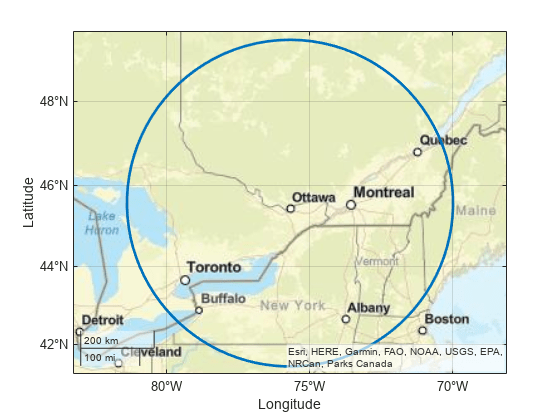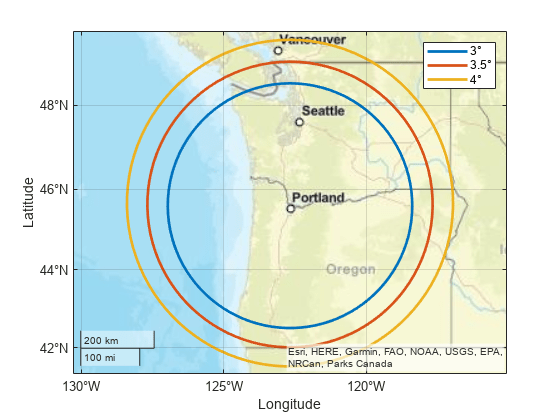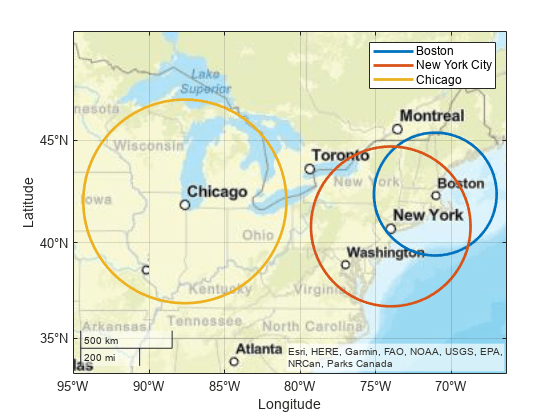scircle1
Small circle from center and radius
Syntax
Description
[
finds the latitude and longitude coordinates of a small circle. Specify the geographic
coordinates of the center of the small circle using lat,lon] = scircle1(lat0,lon0,r)lat0 and
lon0. Specify the radius of the small circle using
r. This syntax assumes that the radius is a spherical distance in
degrees.
[,
where lat,lon] = scircle1(method,___)method is "rh", specifies that distances from
the center of the small circle are rhumb line distances. The default for
method is "gc", which specifies that distances
from the center of the small circle are great circle distances (for a sphere) or geodesic
distances (for an ellipsoid).
mat = scircle1(___)mat.
Examples
Input Arguments
Output Arguments
More About
Version History
Introduced before R2006a




